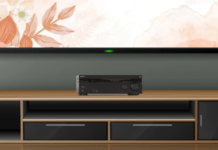They have become the standard for connecting various multimedia devices such as TVs, monitors, gaming consoles, Blu-ray players, and home theatre systems.
HDMI Cables and Connections/Wire Connectors
Types of HDMI Cables
– Standard HDMI: This type of cable supports resolutions up to 720p or 1080i and is best for older devices.
– High-Speed HDMI: High-speed cables support resolutions up to 4K and are well-equipped to transmit additional features like 3D, Ethernet, and audio return channels (ARC).
– Premium High-Speed HDMI: These HDMI Cables are certified to support higher bandwidths and are recommended for 4K Ultra HD content and high-end audio formats.
– Ultra High-Speed HDMI: Precision-designed for the latest technologies, these cables support resolutions up to 8K and 10K, as well as advanced features like variable refresh rate (VRR) andEnhanced Audio Return Channel (eARC).
HDMI Versions
– HDMI 1.0 to 1.2: Introduced basic features like support for 720p and 1080i resolutions, as well as multi-channel audio.
– HDMI 1.3 and 1.4: Added support for higher resolutions (1080p and beyond), 3D content, Ethernet channel, and Audio Return Channel.
– HDMI 2.0 and 2.0a: Enabled 4K resolution at 60Hz, increased bandwidth, and support for HDR (High Dynamic Range).
– HDMI 2.1: The latest version with increased bandwidth to support 8K and 10K resolutions, Variable Refresh Rate (VRR) for gaming, eARC for advanced audio formats, and other gaming-oriented features.
Connector Types
– HDMI Type A: The standard full-size HDMI connector is used in most devices.
– HDMI Type C (Mini HDMI): A smaller version is found on some cameras and tablets.
– HDMI Type D (Micro HDMI): An even smaller version is used in certain smartphones and tablets.
Backward Compatibility
HDMI cables and connectors are backwards compatible, so you can use newer cables with older devices. However, you may not be able to leverage the most cutting-edge features and resolutions if your devices don’t support them.
Cable Length
The length of an HDMI cable can affect signal quality. For shorter cable lengths (up to 10 feet or 3 meters), most high-quality cables should work fine. However, for longer distances, it’s crucial to choose cables designed for longer runs or consider using signal boosters or HDMI extenders.
Quality and Price
HDMI cables can vary in terms of build quality and price. In general, expensive HDMI cables don’t offer significant advantages over reasonably priced ones. As long as you choose a cable that meets the required specifications for your devices and intended use, you should be good to go.
Remember that while HDMI cables transmit audio and video signals, they don’t enhance the quality of the content itself. The quality of the source material and the capabilities of the connected devices play a key role in the viewing experience by ensuring that the electrical connectors can do their bit. Also, it would be a good idea to seek expert help in offering high-quality HDMI cables for home and professional use across a wide range of applications and information on HDMI cable prices.


















